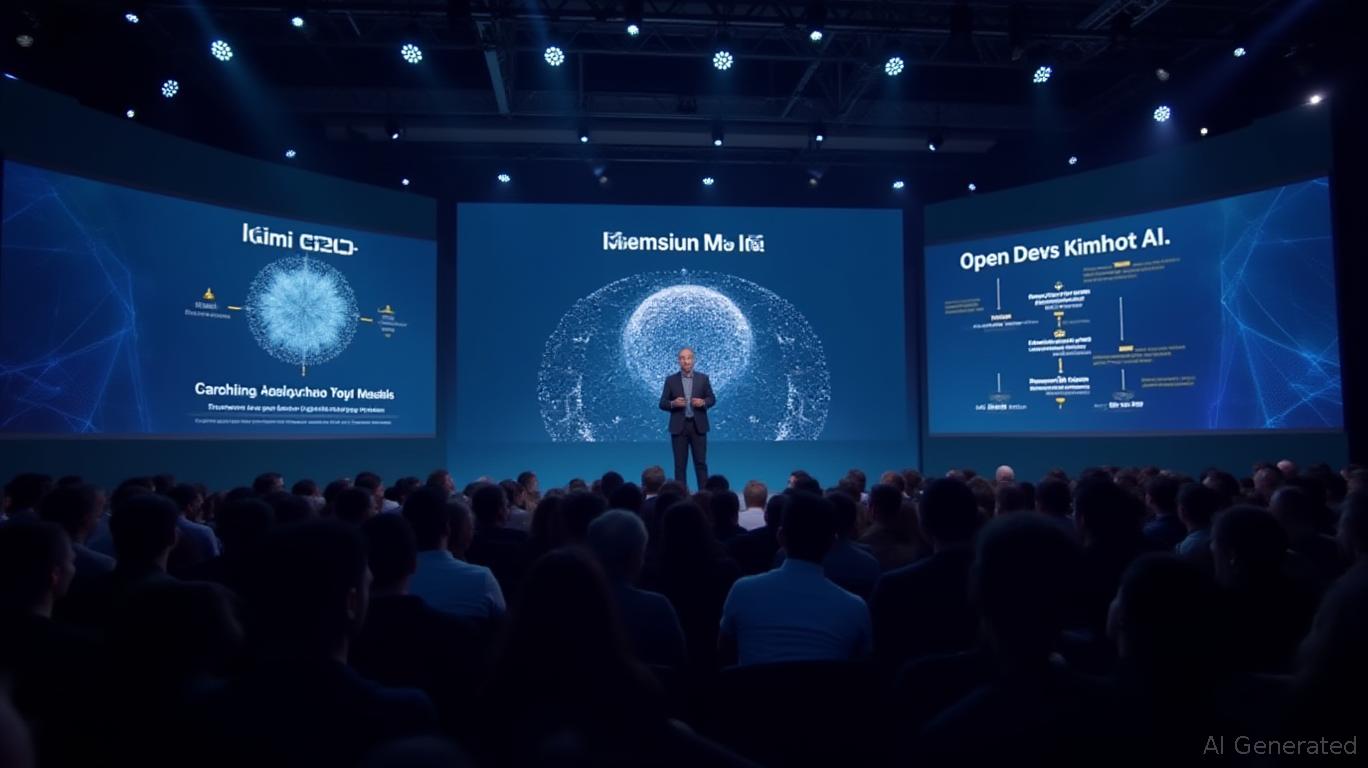AInvest Newsletter
Daily stocks & crypto headlines, free to your inbox
Moonshot AI, a Chinese AI startup backed by Alibaba, has unveiled its latest large language model, Kimi K2. This new model is designed to be a low-cost, open-source alternative to existing AI models, with a particular focus on coding tasks. Kimi K2 is described as an "Open-Source Agentic Model" and is a sparse mixture of experts (MoE) model with 1 trillion total parameters and 32 billion active parameters. These active parameters are specialized compute blocks assigned to specific tasks.
In the announcement, the startup claimed that its neural network outperformed Claude Opus 4 on two benchmarks and performed better than OpenAI's GPT-4.1 on several metrics. Additionally, the model offers lower token processing costs, with $0.15 per 1 million input tokens and $2.50 per 1 million output tokens. By comparison, Claude Opus 4 charges $15 for 1 million input tokens and $75 for 1 million output tokens. For OpenAI's GPT-4.1, the rates are $2 for 1 million input tokens and $8 for 1 million output tokens.
Kimi K2 is available for free through the Kimi app and web interface. The company has open-sourced two versions: Kimi-K2-Base, a base model designed for researchers and developers who need full control over customization, and Kimi-K2-Instruct, an instruction-tuned version optimized for universal applications, including chatbots and agent-based AI scripting.
Initial reviews of Kimi K2 on English and Chinese social networks are mostly positive, although some users have noted the widespread issue of hallucinations in the AI segment. The new model reflects a broader industry trend: the move to open source, which allows both startups and large technology companies to improve efficiency and accelerate the adoption of AI products. This approach involves providing public access to a program’s source code, enabling third-party developers to modify and refine the model architecture, fix bugs, scale functionality, and implement their own improvements and customizations for specific tasks.
Among prominent Chinese startups, DeepSeek and Tencent offer open-source models. At the same time, OpenAI CEO Sam Altman announced that the launch of the company’s own open-source AI model has been postponed indefinitely, citing the need for additional security tests. The release of Kimi K2 highlights several key points about the current state of AI development. Firstly, it demonstrates that China is at the forefront of AI modeling performance, with organizations like Moonshot AI and DeepSeek capable of developing cutting-edge models. Secondly, it shows that the gap between Western and Chinese open models is widening, with Chinese models often outperforming their Western counterparts in terms of both performance and permissive licensing.
This is evident in the fact that Kimi K2 outperforms models like GPT-4.1 and Claude Opus 4 in coding benchmarks. The development and release of Kimi K2 also underscore the challenges faced by Western AI companies. The delay in the release of OpenAI's open-weight model, attributed to the need for additional safety tests, suggests that Western companies are playing catch-up in the open-source AI race. This delay, coupled with the rapid adoption and integration of Kimi K2 into various applications, indicates that Western companies may need to rethink their strategies for R&D adoption and open science projects.
The release of Kimi K2 is not just a technical achievement but also a geopolitical statement. It signals that China is not only capable of developing advanced AI models but also of disseminating this technology rapidly. This has implications for the global AI landscape, as it challenges the notion that Western companies are the sole leaders in AI development. The permissive licensing of Kimi K2, which allows for widespread use and modification, further accelerates its adoption and integration into various applications.
In summary, the release of Kimi K2 by Moonshot AI is a significant development in the AI landscape. It represents a major advancement in open-source AI, challenges the dominance of Western AI models, and highlights the rapid progress being made by Chinese AI companies. The implications of this release are far-reaching, affecting not only the technical aspects of AI development but also the geopolitical dynamics of the AI industry.

Quickly understand the history and background of various well-known coins

Dec.02 2025

Dec.02 2025

Dec.02 2025

Dec.02 2025

Dec.02 2025
Daily stocks & crypto headlines, free to your inbox
Comments
No comments yet